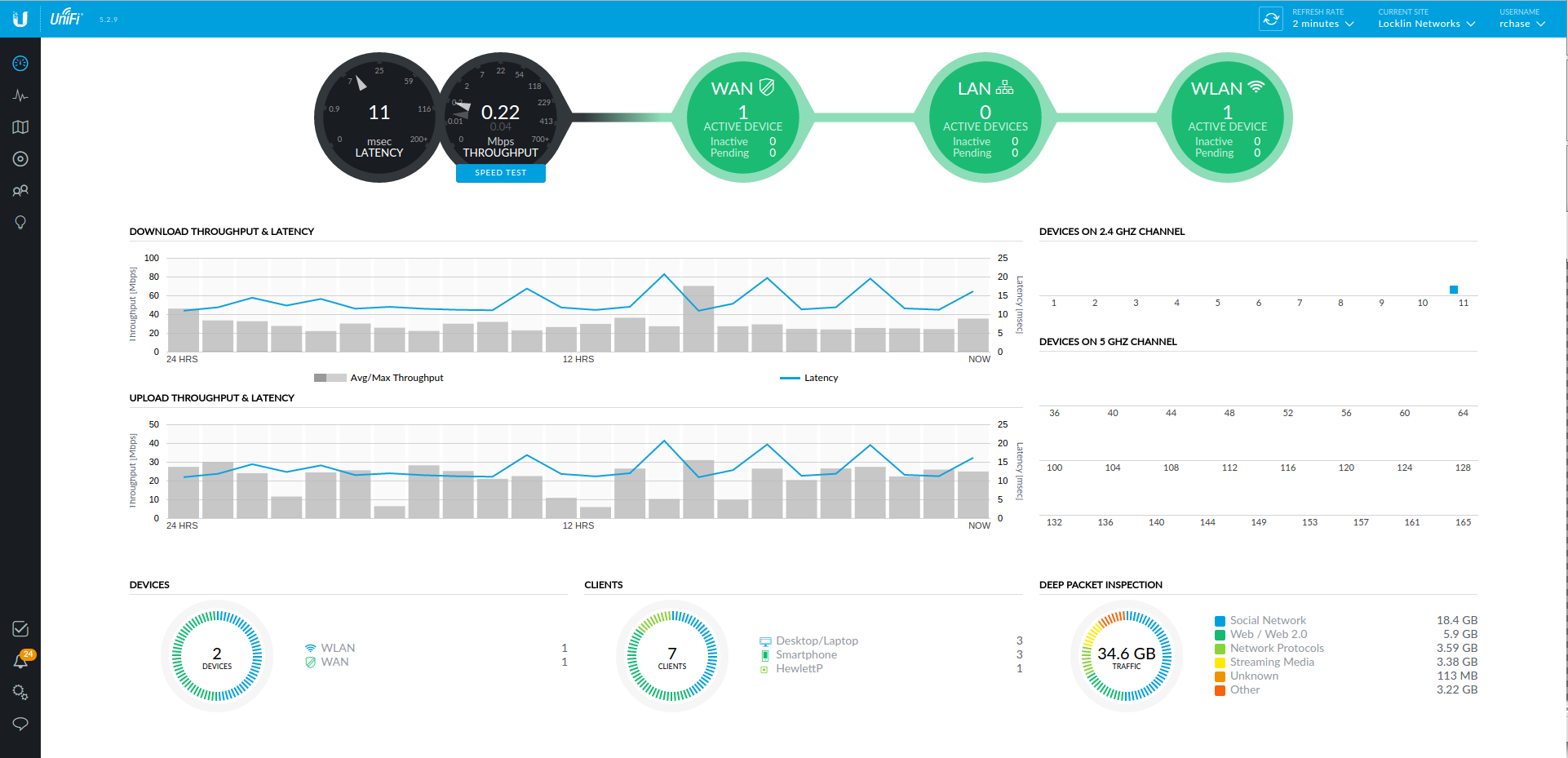How to install UniFi Controller with Let's Encrypt SSL and Apache Proxy
This is a guide to obtain a free SSL (Let’s Encrypt) for UniFi Controller running on port 443 rather than the default port 8443

Overview
This is a guide to obtain a free SSL (Let’s Encrypt) for UniFi Controller running on port 443 rather than the default port 8443. This method uses an Apache reverse proxy rather than dealing with trying to change Ubiquiti’s built in SSL and port configuration, which I had difficulty with. Credit to unizac for this method.
Debian 8 Instructions
Update Debian
sudo apt-get update -y
sudo apt-get upgrade -y
Install Unifi Controller
echo "deb http://www.ubnt.com/downloads/unifi/debian unifi5 ubiquiti" > /etc/apt/sources.list.d/ubnt.list
apt-key adv --keyserver keyserver.ubuntu.com --recv C0A52C50
apt-get update -y
apt-get install unifi -y
Install Let’s Encrypt certbot
echo 'deb http://ftp.debian.org/debian jessie-backports main' | sudo tee /etc/apt/sources.list.d/backports.list
sudo apt-get update
sudo apt-get install python-certbot-apache -t jessie-backports
Run the Certbot wizard
certbot --apache
Add cronjob to auto renew cert every Monday at 2:30am
sudo crontab -e
30 2 * * 1 /usr/bin/certbot renew >> /var/log/le-renew.log
Configure Apache
Add modules to Apache for Proxying HTTP/HTTPS to 8080 and 8443
mkdir /var/www/unifi
a2enmod proxy
a2enmod proxy_http
a2enmod proxy_wstunnel
Edit 000-default.conf
nano /etc/apache2/sites-enabled/000-default.conf
Example of 000-default.conf, change unifi.yourdomain.com to your site
<VirtualHost *:80>
# The ServerName directive sets the request scheme, hostname and port that
# the server uses to identify itself. This is used when creating
# redirection URLs. In the context of virtual hosts, the ServerName
# specifies what hostname must appear in the request's Host: header to
# match this virtual host. For the default virtual host (this file) this
# value is not decisive as it is used as a last resort host regardless.
# However, you must set it for any further virtual host explicitly.
ServerName unifi.yourdomain.com
ServerAdmin webmaster@localhost
DocumentRoot /var/www/unifi
# Available loglevels: trace8, ..., trace1, debug, info, notice, warn,
# error, crit, alert, emerg.
# It is also possible to configure the loglevel for particular
# modules, e.g.
#LogLevel info ssl:warn
ErrorLog ${APACHE_LOG_DIR}/error.log
CustomLog ${APACHE_LOG_DIR}/access.log combined
# For most configuration files from conf-available/, which are
# enabled or disabled at a global level, it is possible to
# include a line for only one particular virtual host. For example the
# following line enables the CGI configuration for this host only
# after it has been globally disabled with "a2disconf".
#Include conf-available/serve-cgi-bin.conf
<Directory /var/www/unifi>
Options None
AllowOverride None
Require all granted
</Directory>
</VirtualHost>
Edit 000-default-le-ssl.conf
nano /etc/apache2/sites-enabled/000-default-le-ssl.conf
Example of 000-default-le-ssl.conf, change unifi.yourdomain.com to your site
<IfModule mod_ssl.c>
<VirtualHost *:443>
# The ServerName directive sets the request scheme, hostname and port that
# the server uses to identify itself. This is used when creating
# redirection URLs. In the context of virtual hosts, the ServerName
# specifies what hostname must appear in the request's Host: header to
# match this virtual host. For the default virtual host (this file) this
# value is not decisive as it is used as a last resort host regardless.
# However, you must set it for any further virtual host explicitly.
ServerName unifi.yourdomain.com
ServerAdmin webmaster@localhost
DocumentRoot /var/www/unifi
SSLProxyEngine On
SSLProxyCheckPeerCN off
SSLProxyCheckPeerName off
ProxyPreserveHost On
ProxyPass /wss wss://localhost:8443/wss
ProxyPassReverse /wss wss://localhost:8443/wss
ProxyPass / https://localhost:8443/
ProxyPassReverse / https://localhost:8443/
# Available loglevels: trace8, ..., trace1, debug, info, notice, warn,
# error, crit, alert, emerg.
# It is also possible to configure the loglevel for particular
# modules, e.g.
#LogLevel info ssl:warn
ErrorLog ${APACHE_LOG_DIR}/error.log
CustomLog ${APACHE_LOG_DIR}/access.log combined
# For most configuration files from conf-available/, which are
# enabled or disabled at a global level, it is possible to
# include a line for only one particular virtual host. For example the
# following line enables the CGI configuration for this host only
# after it has been globally disabled with "a2disconf".
#Include conf-available/serve-cgi-bin.conf
SSLCertificateFile /etc/letsencrypt/live/unifi.example.com/fullchain.pem
SSLCertificateKeyFile /etc/letsencrypt/live/unifi.example.com/privkey.pem
Include /etc/letsencrypt/options-ssl-apache.conf
</VirtualHost>
</IfModule>
Update Unifi Controller to latest version
sudo apt-get update
sudo apt-get upgrade
Restart Apache for changes to take effect
service apache2 restart